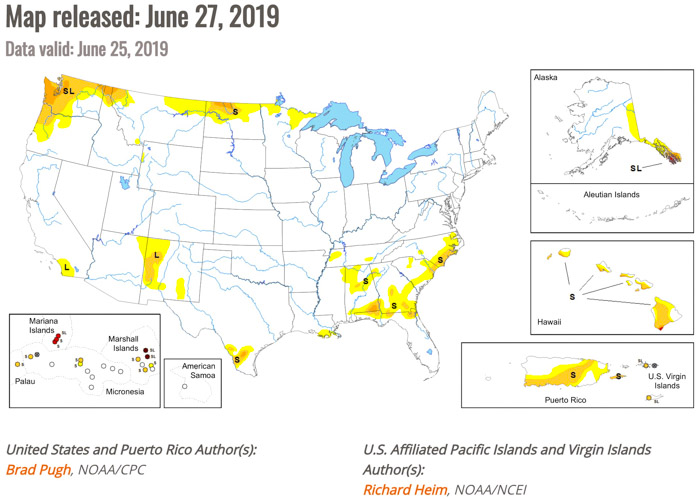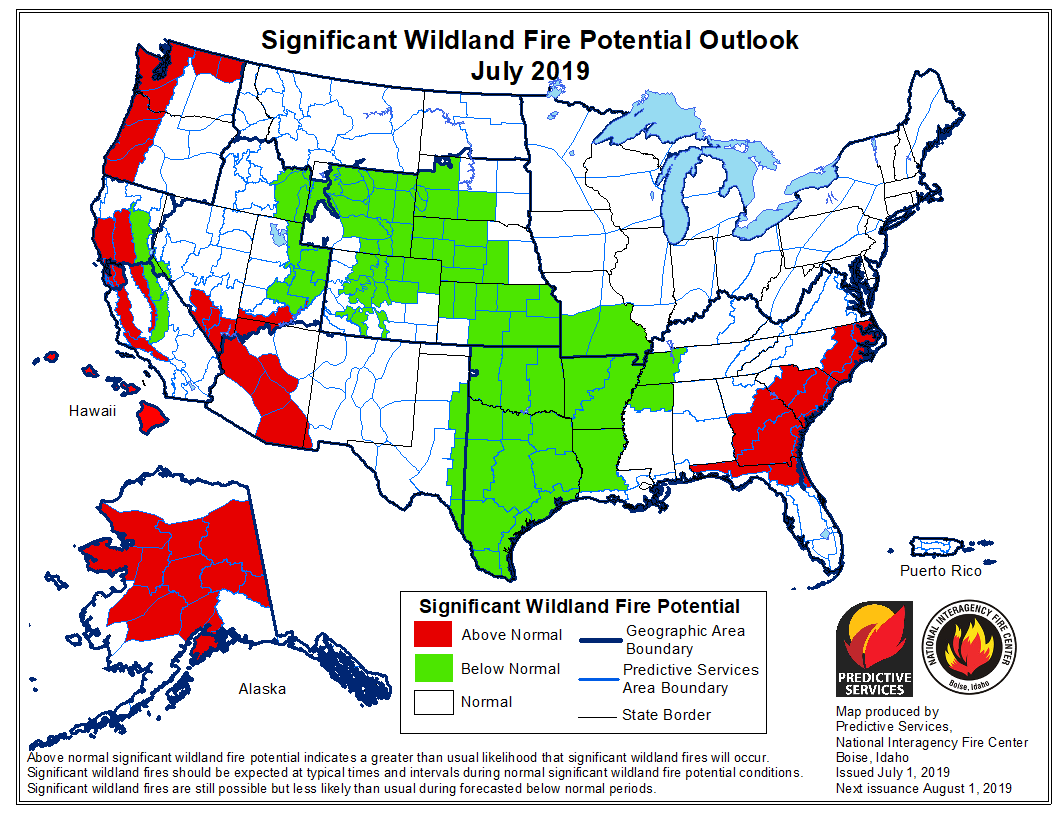On July 1 the Predictive Services section at the National Interagency Fire Center issued their Wildland Fire Potential Outlook for July through October. The data represents the cumulative forecasts of the ten Geographic Area Predictive Services Units and the National Predictive Services Unit.
If NIFC’s analysis is correct, areas in California, Washington, Oregon, Arizona, Alaska, and California will have elevated potential for wildfires at times during the four month period. Forecasters predict portions of Florida, Georgia, and the Carolinas will have enhanced potential in July.
The areas affected by the multi-year drought in the West have greatly decreased to the point where there are no locations with extreme or exceptional drought. No areas in California are listed as being in drought status, which is a major change from five or six months ago.
Below:
- An excerpt from the NIFC narrative report for the next several months;
- More of NIFC’s monthly graphical outlooks;
- NOAA’s three-month temperature and precipitation forecasts;
- Drought Monitor;
- Vegetation greenness map.
From NIFC:
“Moderate to severe drought conditions exist across Washington and Oregon, especially across western portions of both states. Soil moisture levels are drier than average and drought stress exists. Another area of concern is southern Arizona. While fuel conditions across most of the Southwest exhibit above average fuel moisture and greenness, the southern third of the state is the anomaly. Areas along and north of the Mexican Border remain persistently dry. Periodic wind events have led to critical periods with above normal activity observed. This area will remain a concern until the monsoon arrives in July.
“Alaska experienced a slow entry into its season. By mid-June fire activity increased significantly as fuels continued dried. Numerous lightning events produced a significant number of fire starts. The consistent warm and dry pattern observed at month’s end suggested that the state will continue to be active well into July before the season begins to wind down with the arrival of late summer rains in August.
“In California, robust crop of grasses has grown. The fuel beds have become more continuous than what is typically seen. When the hot, dry, and windy patterns develop during the middle to late summer months, the large fire potential in these areas will elevate. In the higher elevations, the abundant moisture received translated into historic snowfall. This and slow melting rates will translate into a delayed entry into the fire season. To the east, concerns across the Great Basin are rising due to heavy fuel loading and an expected long-duration heat event in early July that should propel the region into fire season.
“With fine fuels fully cured across the West and high elevation larger fuels becoming adequately dry in August, fire season 2019 will peak in August across much of the West. Exceptions to this will be the Southwest where an ongoing monsoon reduced fire activity and the central Rockies, which may not have enough time to fully dry and cure before monsoonal moisture, begins to affect the region.
“A gradual decrease in fire activity is expected to begin by mid-September as the seasonal transition begins and as shortening days translate to shorter burn periods and better overall humidity recoveries overnight. California will begin to reenter fire season in October as East and North wind events begin to occur.”










You mean, like, fire season?